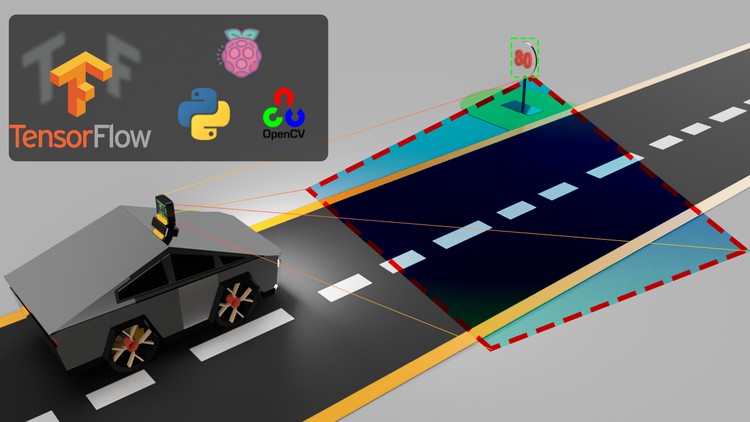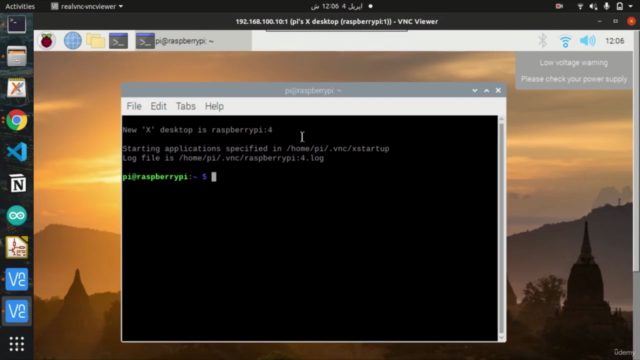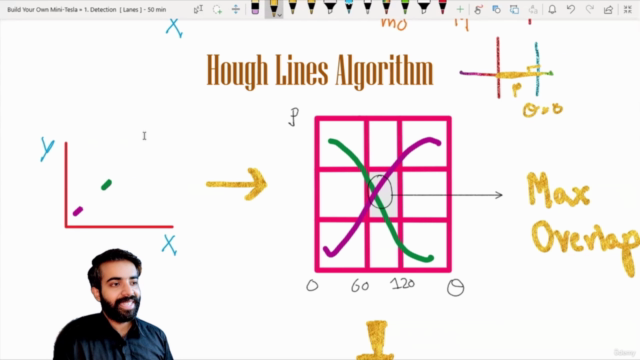Autonomous Car:Deep Learning & Computer Vision for Beginners

Why take this course?
🚀 Course Title: Autonomous Cars: Deep Learning & Computer Vision for Beginners
🚗 Course Headline: Dive into the Future with Python, OpenCV, and Raspberry Pi to Build Your Own Self-Driving Car!
Course Description
Embark on a thrilling journey into the world of autonomous vehicles with our comprehensive course that marries both the hardware and software components required to build your very own self-driving car. This course is meticulously designed for beginners who aspire to understand the intricate workings of deep learning and computer vision in the context of self-driving cars.
🛠️ Hardware Part
Laying the groundwork with real-world application, we'll explore the following hardware essentials:
- 💻 Raspberry Pi Setup with Raspbian: Bring your Raspberry Pi to life with the right operating system.
- 🔗 Raspberry Pi and Laptop VNC Setup: Learn how to remotely control your Raspberry Pi from your laptop.
- ⚡ Hardware GPIO Programming: Interact with the world using Raspberry Pi's General Purpose Input/Output (GPIO) pins.
- 💡 Led Controlling with Python Code: Manipulate LEDs and understand basic electronic components control.
- 🚗 Motor Control: Master controlling motors, which will be the lifeblood of your autonomous vehicle's movement.
- 📷 Camera Interfacing Video Feed: Set up your camera to capture real-time video that will serve as the eyes for your car.
🧠 Software Part
Diving deeper into the software realm, we'll cover:
- 🎬 Video Processing Pipeline setup: Create a pipeline to process and analyze video feeds from the camera.
- 🫤 Lane Detection with Computer Vision Techniques: Learn to recognize lanes for safe navigation on the road.
- 🚜 Sign Detection using Artificial Deep Neural Network: Detect and understand road signs to follow traffic rules.
- ⏩ Sign Tracking using Optical Flow: Implement optical flow algorithms to track objects in motion.
- 🚗 Control: Translate the data gathered into actionable commands for your car, such as steering, accelerating, and braking.
Course Flow (Self-Driving Development Stage)
We'll kickstart by assembling a running prototype on Raspberry Pi using pre-made 3D models and off-the-shelf car parts, provided by the instructors. Post setup, we'll delve into serious programming to interface the Raspberry Pi with motors and cameras for real-time processing.
After understanding the transformative impact of self-driving vehicles on transportation and the environment, we'll:
- 🔍 Perform a case study of a renowned brand in self-driving technology (like Tesla) for inspiration.
- 🤔 Propose which level of autonomous driving we aim to achieve with our project.
Hardware Requirements
- Raspberry Pi 3B or 3B+: The heart of our self-driving car project.
- Ackerman Drive car: A compact car ideal for such projects.
- 12V lipo Battery: To power your autonomous vehicle.
- Servo Motor: For precise control of steering and other functions.
Software Requirements
- Python 3.6: The programming language we'll be using throughout the course.
- Opencv 4.2: An open-source computer vision library.
- TensorFlow: A machine learning framework for deep learning applications.
- 🧠 A motivated mind ready to tackle a massive programming project!
Important Notes
- This course is specifically tailored for Raspberry Pi 3B and 3B+. Guidance for other versions of Raspberry Pi regarding TensorFlow installation is not provided.
- For those who prefer to learn without immediate purchase, the course's Github repository offers a glimpse into the code that powers our self-driving car project. 📚
- Don't forget to reach out with any questions or for further assistance before diving into your exciting build! ✉️
Join us on this epic adventure into the future of transportation and become a part of the autonomous revolution! 🚀🚗✨
Course Gallery




Loading charts...